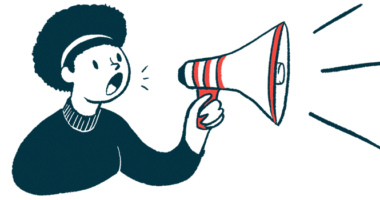Stoke readies to meet with FDA on 4 years of zorevunersen study data
Injection therapy shown to reduce seizures, improve cognition in Dravet

Stoke Therapeutics plans to meet with the U.S. Food and Drug Administration (FDA) before the end of this year to review four years of safety and efficacy data on its experimental therapy zorevunersen for Dravet syndrome, and to discuss faster ways to make the treatment available to patients if approved.
In clinical trials, the injection therapy has been shown to reduce seizure frequency by more than 50% after six months with a single dose, and by nearly 75% with multiple doses. Further, the therapy candidate was found to improve communication, motor skills, and behavior among patients.
Since summer, Zorevunersen has been in Phase 3 clinical testing in the EMPEROR (NCT06872125) study, which is still recruiting up to 150 children and adolescents with Dravet. EMPEROR is enrolling participants ages 2 to 17 at multiple sites in the U.S., Japan, and the U.K. As part of this study, participants are randomly assigned to either zorevunersen or a sham procedure.
Ian F. Smith, Stoke’s CEO and director, said in a press release that the company is “on an important growth trajectory.”
“In just three months since the initiation of our Phase 3 EMPEROR study, we have made significant progress with more than 20 patients randomized into dosing and a steady progression of more patients entering the screening period,” Smith said.
More clinical sites are expected to open in Europe in the first half of 2026, according to the company. Thus far, more than 150 patients have been identified as potential candidates for the study, and in addition to the 20 already randomized, 35 others have entered the eight-week screening before being assigned to zorevunersen or the sham procedure, per the release.
Zorevunersen received the FDA’s breakthrough therapy designation at the end of last year. This designation helps expedite the development and review of treatments for serious diseases that demonstrate substantial improvement over existing options, based on early clinical data.
“We look forward to meeting with the FDA under our breakthrough therapy designation before year-end, at which time we will review the four years of safety and efficacy data from our clinical studies and discuss how we can work together to deliver zorevunersen to patients through expedited regulatory pathways,” Smith said.
Zorevunersen tested for safety, effectiveness in 4 studies in US and UK
People with Dravet syndrome typically have a mutation in one of the two copies of the SCN1A gene, resulting in the reduced production of NaV1.1, a subunit of a sodium ion channel protein that plays a role in the transmission of electrical signals in the brain. This causes seizures and other symptoms, some of which are unresponsive to treatments available to date.
Zorevunersen, previously known as STK-001, is designed to increase the activity of the healthy copy of the SCN1A gene, allowing it to produce more gene product and compensate for the disease-causing mutated copy. This is expected to ease symptoms by targeting the root cause of Dravet syndrome.
In the U.S., zorevunersen is being tested in SWALLOWTAIL (NCT04740476), a long-term extension of the completed open-label Phase 1/2 MONARCH (NCT04442295) study. In the U.K., the therapy is being evaluated in the LONGWING (ISRCTN12811235) study, a long-term extension of the completed ADMIRAL trial (ISRCTN99651026).
In the MONARCH and ADMIRAL studies, a total of 81 children and adolescents with a diagnosis of Dravet syndrome received single or multiple intrathecal, or into-the-spinal-canal, injections of up to 70 mg of zorevunersen, in addition to their standard antiseizure medications.
Treatment with a single 70 mg dose of zorevunersen reduced the frequency of seizures by 57% at six months. Multiple doses resulted in median reductions of 85% at three months and 74% at six months. Moreover, doses of at least 30 mg also were shown to improve communication, motor skills, and daily living abilities.
Long-term studies have shown lasting improvements with continued treatment
Three-year data from 74 patients in the ongoing extension studies showed zorevunersen was generally safe and well-tolerated. Lasting reductions in major motor seizures and continued improvements in cognition and behavior were seen when the therapy was given every four months alongside standard antiseizure medications.
After two years in the extension studies, patients also showed steady gains in communication skills along with improvements in daily life and overall well-being. Additional two-year data recently presented at a medical meeting showed continued improvements with the dosing regimen selected for Phase 3 clinical testing.
Patients receiving zorevunersen at doses consistent with this regimen — two loading doses of 70 mg, followed by 45 mg every four months — showed lasting improvements in adaptive behavior. This was measured using the Vineland-3, a semistructured interview conducted with each patient’s parent or caregiver.
On average, Vineland-3 scores improved by 9.8% in the subdomain measuring personal skills. Gains were also observed in coping skills (10.8%), receptive communication (11.1%), expressive communication (11.4%), and interpersonal relationships (14.4%). These gains contrasted with no changes on the best available standard of care in a natural history study.
Doctors and caregivers also reported consistent and meaningful improvements in overall clinical status based on the Clinical and Caregiver Global Impression of Change, with most patients (94.7%) seeing improvements that ranged from minimal to very much over three years of treatment with zorevunersen.
“Presentations of new clinical data at medical congresses have provided greater understanding of zorevunersen’s disease-modifying potential that is highly differentiated from any currently available treatments,” Smith said.
According to the CEO, zorevunersen has the potential to improve outcomes for people with Dravet “through substantial seizure reductions and improvements in cognition and behavior.”









